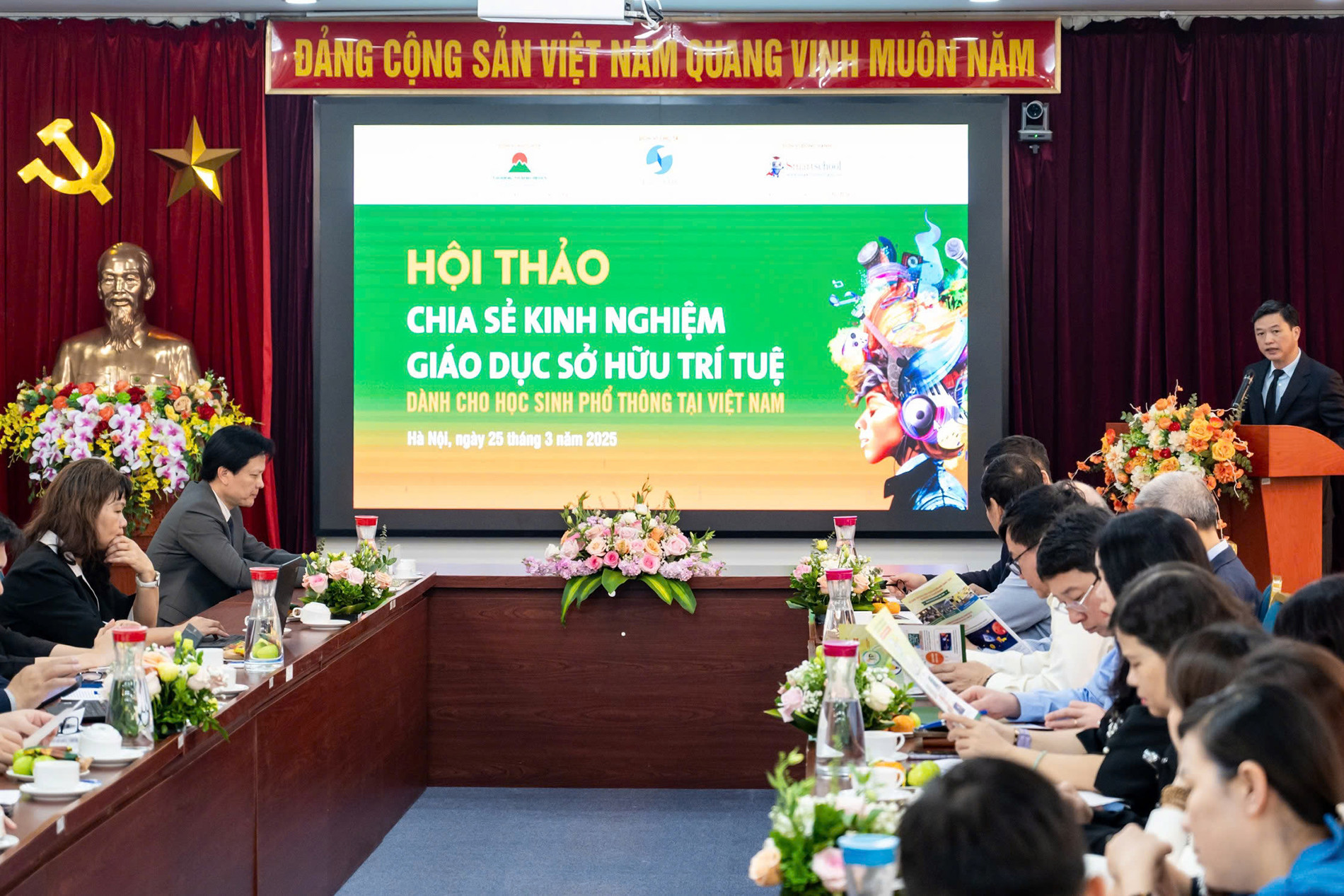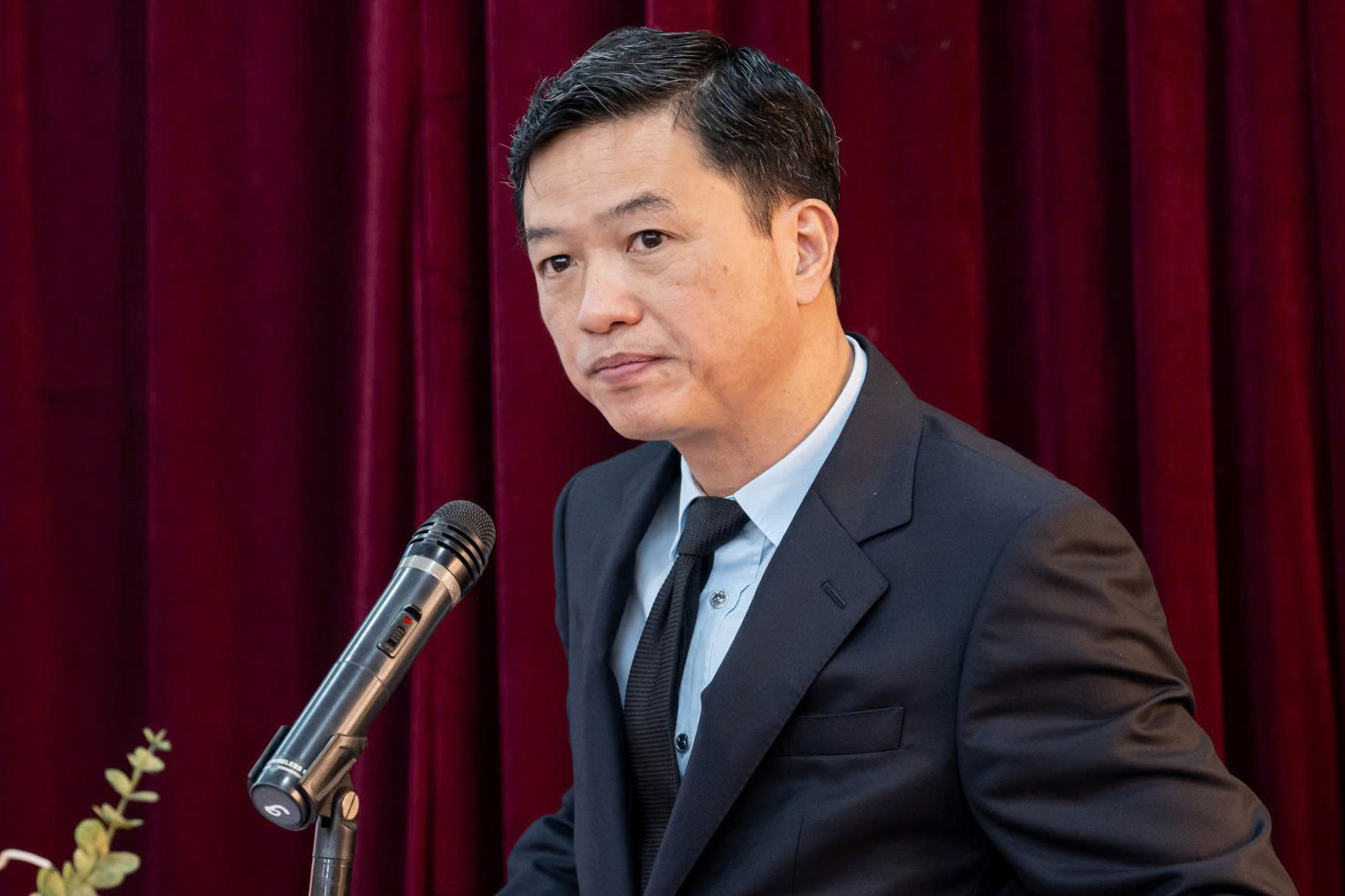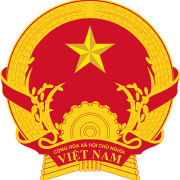On March 25, the Intellectual Property Office of Vietnam (under the Ministry of Science and Technology) held a workshop to share experiences in IP education for high school students.
The workshop highlighted the critical role of intellectual property in promoting innovation from an early age, empowering young generations to leverage ideas and transform them into practical value.
Nurturing creativity in youth from an early age

The workshop on IP education for high school students. Photo: Minh Son
According to research by experts from the World Intellectual Property Organization (WIPO), creativity peaks between the ages of 12 and 20, as young people recognize their talents and develop interests in specific fields.
Beyond this age, traditional educational structures often inhibit creativity by segregating subjects into specialized disciplines, limiting the ability of young people to innovate across subjects.
That is why it is essential to integrate innovation and intellectual property content into the curriculum, allowing students to develop creative thinking and learn how to utilize ideas for tangible economic benefits.
Intellectual property as a strategic asset
Altayework, Head of Online Training at the WIPO Academy, stated that intellectual property is not just a right or protection mechanism but also an aspect of creativity.
"Today, physical assets like land or production facilities no longer dominate daily life. What we consume or enjoy - entertainment works, consumer products, or medical treatments - are intangible assets, transformed from ideas into products," the WIPO representative said.
In reality, technology is driven by ideas that have been transformed into physical forms. Ideas now hold greater value and significance than ever before.
Many outstanding ideas face challenges in reaching the market or risk being lost or copied without permission. Without protection, innovation is hindered.
A representative from WIPO emphasized that innovation is the backbone of progress, while intellectual property is the best companion for innovation.
Understanding intellectual property is not just about protection but also a strategy to monetize knowledge and ideas. It enables people to earn a living from their creativity and professional work.
Promoting IP education in Vietnam's schools

Director General of the Intellectual Property Office, Luu Hoang Long. Photo: Minh Son
During the workshop, Luu Hoang Long, Director General of the Intellectual Property Office of Vietnam, stated that with the trend of international economic integration, intellectual property increasingly proves its importance in promoting innovation, advancing technology, and enhancing national competitiveness.
"To develop a sustainable and coherent national intellectual property system, it is crucial to educate young generations, especially high school students, about intellectual property," said the Director General.
In recent years, although knowledge and capacity related to intellectual property have been enhanced through various forms, educating high school students on intellectual property remains a relatively new and unstructured approach in Vietnam.
To foster innovation, the Intellectual Property Office has implemented awareness-raising activities at some educational institutions, including Van Chuong Primary School, Lang Thuong Primary School, and the Experimental Primary and Secondary School, with positive results.
A survey conducted by the Intellectual Property Office among 800 students from various schools revealed that most primary school students (74%) and secondary school students (87%) had never been introduced to IP knowledge. However, the majority expressed a willingness to learn about it.
According to Dr. Nguyen Hoang Hanh, Director of the Center for Research, Training, and Support, and Consulting (Intellectual Property Office), equipping students with intellectual property knowledge should start at the high school level.
He urged state educational management agencies to consider implementing suitable approaches across different educational stages./.
